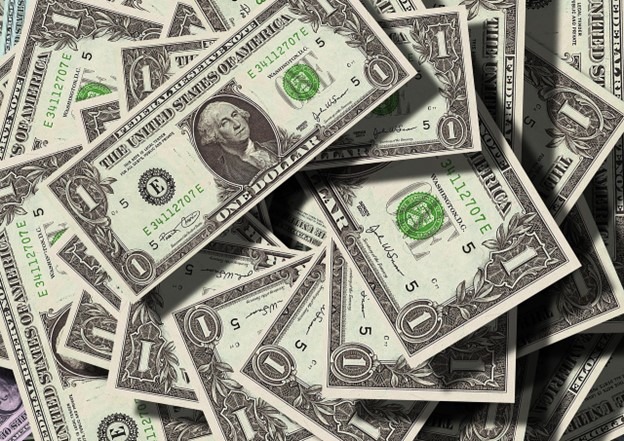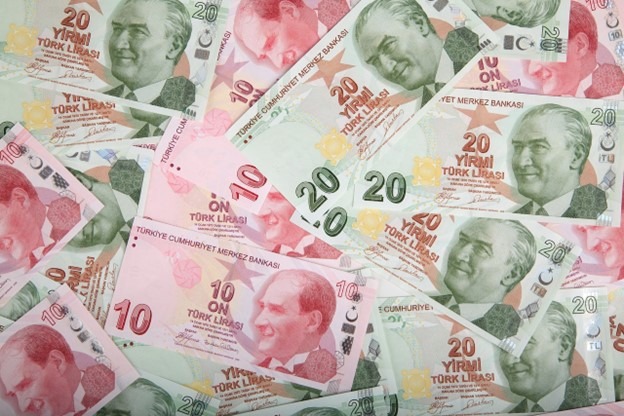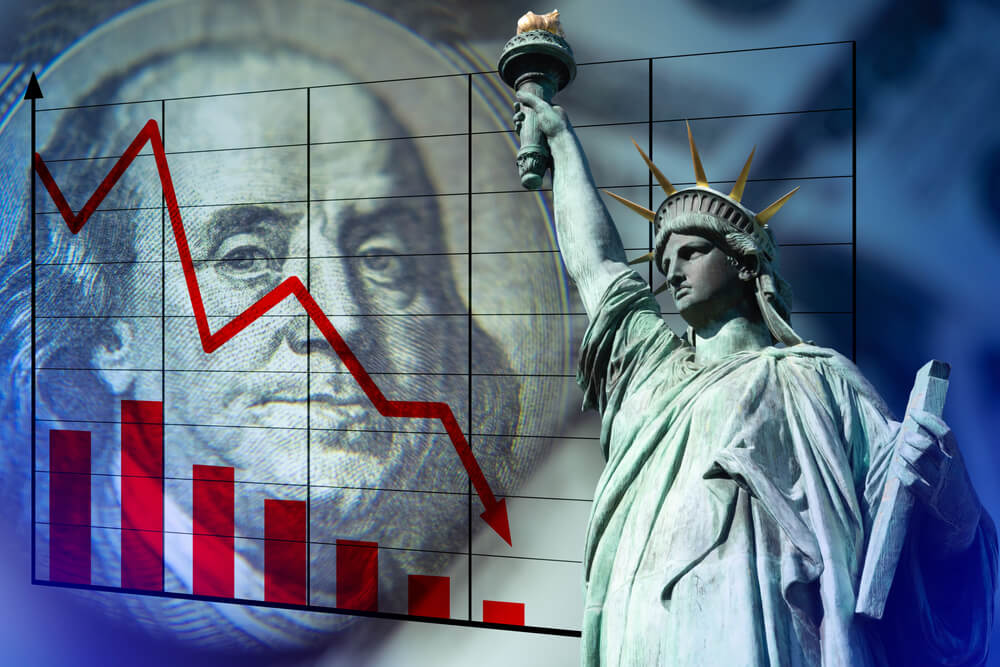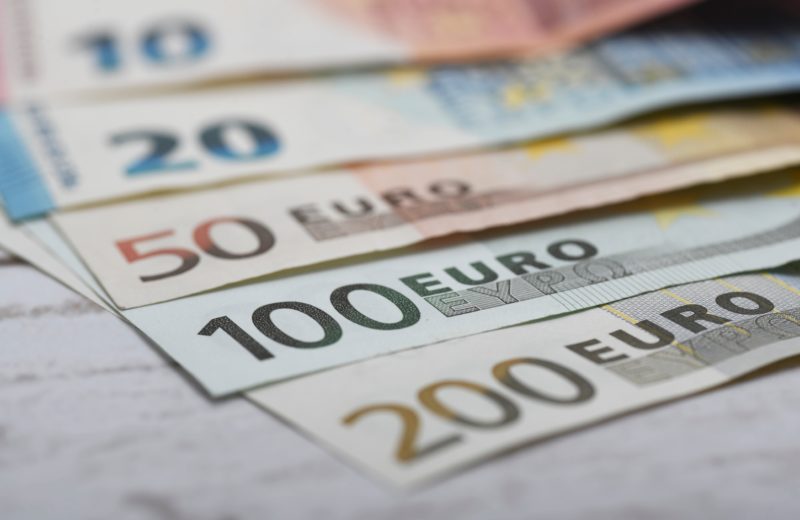Amidst a weak labour market, the US dollar saw a decline, triggering concerns about its future trajectory and global implications. Meanwhile, the yen received a welcomed respite as both the dollar and US Treasury yields showed a slight dip on Thursday. This followed a night of mixed US economic data, leading markets to revise the likelihood of the Federal Reserve raising interest rates later in the year.
Is It a Good Time to Buy US Dollars? Dollar Dips and Yields Steady
The dollar index, which monitors the greenback against six global peers, remained close to the overnight levels at 106.78. The ADP National Employment Report prompted this shift in the dollar’s trajectory. This revealed that US private payrolls in September grew much slower than anticipated. However, some experts believe this might be an exaggerated indication of a labour market slowdown.
Longer-dated US Treasury yields also eased from their 16-year highs post this data. These levels were maintained in the Asian market hours, reflecting a brief breather for the market.
ISM’s Non-Manufacturing PMI and Economic Activity
The Institute for Supply Management’s (ISM) non-manufacturing purchasing managers’ index (PMI) experienced a slight decline, at 53.6. It remained above the critical 50-point threshold, distinguishing monthly economic expansion from contraction. Kyle Rodda, a markets analyst at Capital.com, highlighted, “The ISM Services PMI offers at least one data point showing that economic activity isn’t experiencing a resurgence.”
Yen’s Revival and Speculation on Intervention
The yen, often sensitive to US yields, traded around 148.85 yen to the dollar. This marked a modest 0.2% dip from late US levels, moving away from Tuesday’s low of 150.165. Questions about a potential intervention by Japanese authorities were raised after the yen strengthened by 2% following the breach of the 150-line. However, the Bank of Japan’s money market data suggested that Japan likely didn’t intervene in the currency market.
Euro’s Position Versus Dollar and Analysts’ Predictions
The euro stood at $1.0512, staying above the week’s lowest point of $1.0448. According to analysts surveyed by Reuters, there is a possibility that the euro could decline to $1.04 this month, with just one respondent foreseeing parity. However, none of the forecasters provided a specific forecast of parity. Meanwhile, the British pound was trading at $1.2139. It rebounded from its recent low of $1.20385 against the dollar observed on Wednesday.
The euro was up 0.06% at $1.0511, having fallen on Tuesday to its lowest level this year at $1.0448. The single currency has dropped more than 14% against the dollar over the past three months.
The Dollar Index and Adjusted Market Sentiments
The dollar index measures the performance of the US dollar against six major currencies, including the euro and yen. It stabilized at 106.75 following the release of Wednesday’s data, indicating a slower-than-expected increase in US private payrolls for September. While analysts expressed the need for further evidence to assess the pace of labour market cooling, financial markets reduced their expectations for a Federal Reserve interest rate hike in November. Currently, there is nearly an 80% probability that the central bank will maintain its current interest rates.
Yen’s Recovery and Its Implications
Longer-term US Treasury yields retreated from their 16-year peaks. Meanwhile, the yen, often influenced by US yields, recently traded at around 149, showing a modest 0.1% gain against the dollar. On Tuesday, it reached 150.165, its weakest point since October 2022. According to analyst Ulrich Leuchtmann, the market’s heightened response to the negative US data might be attributed to the ambitious levels set by the euro/dollar, which fell below $1.05, and 10-year T-note yields, which exceeded 4.80%. Leuchtmann suggested that these levels required substantial data support.
The rapid rebound of the yen following its breach of the 150-line earlier this week prompted speculation that Japanese authorities might have taken steps to bolster the currency. However, data from the Bank of Japan’s money market, released on Wednesday, indicated that intervention by Japan was highly unlikely.
Outlook for the Ruble and Its Economic Dependencies
The best Russian rouble to dollar exchange rate today hovered around 99.5, facing challenges in distancing itself from the 100-mark threshold it crossed earlier in the week. This was partly due to decreased foreign currency supply from exporters during the initial days of the month. Therefore, it seems like there’s no perspective to determine the best ruble-to-dollar exchange rate today.
At 0818 GMT, the ruble maintained its stability, with a rate of 99.60 against the dollar and 104.72 against the euro. It also exhibited a slight 0.2% strengthening against the yuan, reaching 13.61. However, it’s worth noting that the ruble’s usual advantage during the month-end tax period, where exporters typically convert their foreign exchange earnings to fulfil local obligations, has diminished.
Energy Revenues and Their Influence
Brent crude oil, serving as the global benchmark for Russia’s primary export, saw a 0.2% increase, reaching $86.02 per barrel. In September, Russia’s oil and gas revenues experienced growth, primarily driven by elevated oil prices. Moscow has been exploring alternative export avenues following the imposition of Western price caps and a seaborne oil export embargo, which had previously constrained energy revenue.
Prospects for the Ruble
October should witness a further rebound in energy revenues due to tax adjustments and the prevailing high commodity prices. According to Alexei Antonov, an expert at Alor Broker, the finance ministry’s anticipation of rising tax income from the sector during October could provide substantial support to the ruble. This is due to the likelihood of oil companies being compelled to enhance their foreign currency export earnings. Antonov mentioned that this potential development might transpire either in the latter part of the month or when the exchange rate surpasses the 100-ruble per dollar mark.
Russian Stock Indexes Performance
Russian stock market benchmarks witnessed a downturn, as the dollar-denominated RTS index registered a 0.3% decrease, reaching 988.4 points. Simultaneously, the ruble-based MOEX Russian index also declined by 0.3%, reaching a level of 3,123.7 points.
In the midst of ongoing economic shifts and potential challenges, the future of the US dollar remains a topic of intense speculation, with some closely monitoring the possibility of a US dollar collapse.















